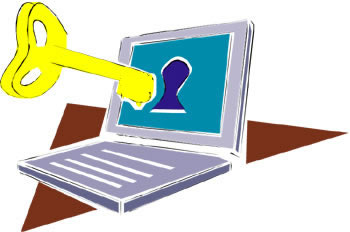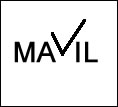
Applying Technology to Learning
among adult learners served by the
Unlimited Learning Center (ULC)
Volume 2, Issue 2
October 2011
Unlimited Learning, Inc.
640 East Second Street
PO Box1273
Cortez, CO 81321
970-565-1601
FUN WITH GOALS
The good fairy tells you, "Make a list of what you want at the end of five years, and I'll grant you each item, as long as you are sure that (1) you really want it, and (2) you explain why you want it." What does your list look like?
You might write, "I want one-million dollars." Why? "It will make me happy." Hmmm... So would you say that your goal is to be happy or to have one-million dollars? If you had a choice between being happy and having a million dollars, which would you choose?
In all likelyhood, we are like our students. We are like all humans. We strive to be happy, and we confuse having things (money, homes, jobs, toys, wealth, education, travel, friends, time, youth, health, fitness, family, sex, stability, food, beauty) with being happy. That's what most of us are taught to believe. If only I had..... I would be happy. Has that plan worked so far?
In the meantime, we think we want things for certain reasons, all of which will make us happy. The process of goal setting/identification (identifying what you think will make you happy) can be very informative and invaluable as we interact as learners.
In our dominant American way of thinking and organizing thoughts, goals can be described in terms of time: life goals, long-term goals, short-term goals, immediate goals. Some might call short-term goals "objectives." What's in a name?! Call them blue wants, green wants, pink wants, and purple wants, and they could represent the same concepts.
George claims, "My goal for enrolling here is to pass my GED." Is that enough for George? Might discussing that concept further be useful both as a personal growth tool and as an educational tool? What does "pass my GED" mean to George?
Students will provide very different responses to that question. If I pass my GED..
- "I can get a job." Really? What kind of job will your GED get you? Is your long-term goal to get a job?
- "I will please my parents." How so? Is your long-term goal to please your parents? Do you agree with them? If not, let's talk about you! Maybe pleasing your parents is what you want to do now, and that makes you happy!
- "I don't want to look stupid." Do you think you look stupid now? Tell me more. Is your long-term goal not to look stupid?
Goal setting, or talking about what you really want through any other kind of process that suits you, can be very self-revealing, and it can guide instruction and learning as few other activities can. Following are a few goal-setting resources to be used with different types of instructional objectives (writing, arguing, explaining, teamwork, self-realization, organizing, presenting, and more) and different students:
1. Discuss the different types of goals. Provide students with a situation (having breakfast, completing an assignment, getting up, writing a letter, enrolling in college,getting married, getting a job, etc..). Have them identify each statement as one type of goal: immediate, short-term, long-term, or lifelong. Answers will vary, encouraging a good discussion. You could also develop lists or discussions around other goal categories: career, personal, community, and family, for example. Remember that the process of identifying goals is far more useful than whether or not the categories are appropriately named. Categories are only helpful in terms of facilitating thinking.
2. Provide a specific situation (learn algebra, write a great essay, get a degree) and have students write short-term or long-term goals related to that situation.
3. Distribute goal-setting handouts and have students fill them out.
- http://www.coaching4impact.com/blog/smartgoalsworksheet.pdf - SMART goal sheet
- http://www.ccd.me.edu/careerprep/CareerPrepCurriculum_LP-7.pdf - Goal-setting lesson plan (included SMART) with several activity sheets.
- Several handout models from "theworksheetplace.com."
ENGAGE READERS!
To be or to have? Better to use neither if you want to avoid boredom! Give students a few examples of sentences that use those two verbs, and contrast them to similar sentences that don't, and the sentences will speak for themselves.
Which would you rather read,"The wind was strong and cold," or "The frigid wind swept leaves through the open windows?"
To get students to engage the senses through their writing, you might give them a list of strong, active verbs, and invite them to use them generously through their writing. You'll find helpful resources on the Web:
- From UNCG: Weak vs. Strong Verbs. You'll find two paragraphs that make the point nicely!
- http://home.comcast.net/~tgeorges/write/les12.htm and another handout from UNCG - Replace passive voice for active voice.
- Add Action Verbs to their vocabulary.
- http://www.cvisual.com/film-techniques/writer-action-verb-list.asp - in PDF and Word (longer than the above).
- http://www.owlnet.rice.edu/~cainproj/writingtips/preciseverbs.html - Precise verbs.
QUICK TIPS
Go to your Windows 7 Accessories folder (Start-> All Programs -> Accessories) Play with some of the tools there. My favorites are Calculator (now with scientific computations added), Note Pad, Sound Recorder, and Paint.
For those of you who want to add equations into applications, "handwrite" your equations in the Math Input Panel: http://windows.microsoft.com/en-US/windows7/Use-Math-Input-Panel-to-write-and-correct-math-equations
The Snipping tool lets you create photos from anything on your desktop and save them in an image format. You can create graphics for showing students how to do things. A picture is worth 1,000 words. And if students produce pictures to express concepts, they might be worth millons of words!
The Sticky Notes provide To-Do reminders on your desktop.
If you use a tool a lot, simply right click the item in the Accessories folder, select "Send To," and then select "Desktop." That adds a short cut to the item on your desktop. From the desktop, you can drag the icon down into your taskbar, where it will always availabe with a click. In fact, I add many shortcuts to my taskbar when I'm using them a lot: Word, Excel, Windows Explorer, and more.
BRAIN CHALLENGE
(You might want to post these on a wall for students to interpret! Post riddles and other puzzles on walls, too.)
1. Can you guess the words?
Example: 26= L. of the A. (Letters of the alphabet) 24 = H. in a D. (Hours in a Day)Take your turn.
- 12 - S of the Z.
- 54 = C. in a D. (with the J.)
- 8 = S. on a S.S.
- 5 = D. in a Z.C.
2.
3.
PROGRESS REPORT
Reminder: After your first report on a student, follow up with clear evidence of progress from that point on.
I've added a form item for stating the student's goal for enrolling or for working with you. Once you state the goal, you need not enter that item again unless the goal changes. I love it when students change goal statments. That often indicates that they are becoming more aware of what they really want!
TEACHING ACROSS THE MILES!
"Distance ed is so impersonal," say a few who haven't tried it.
Diana Haun reinforced my belief, based on my experience, claiming, "I'm finding that I know some of my students more intimately than I could ever know them in face-to-face (f-2-f) classes!"
Bill White said that he misses hugging students in his Chevak classes. He adds, "So now, when I want the 'personal touch,' I go up to the screen and rest my palm against it while the students do the same! We touch each other through the screen!"
Recommended Resources
Richard Davis, our math and electronics expert, recommends the following site for students interested in exploring electronics: http://www.learningelectronics.net/.
Thanks, RIchard!
_______________________________________________
Send us your ideas, contributions, and requests! We want to meet your "tech-knowledgy" needs! Use the Contact information below.
_____________________________________________





